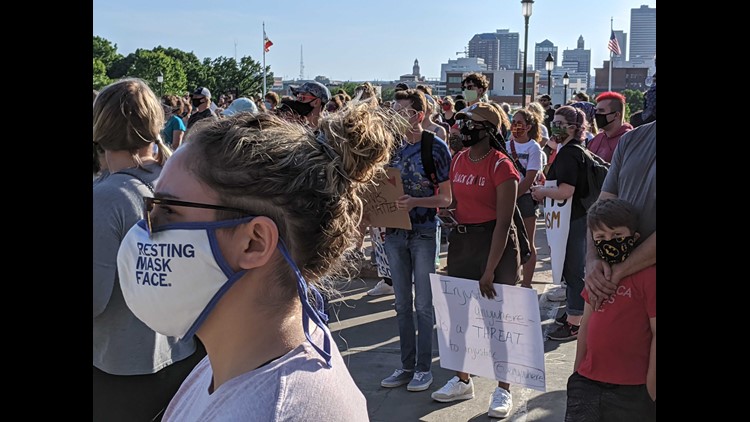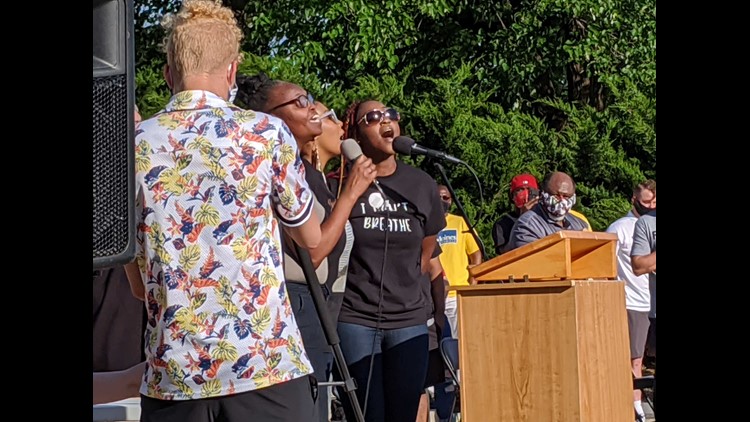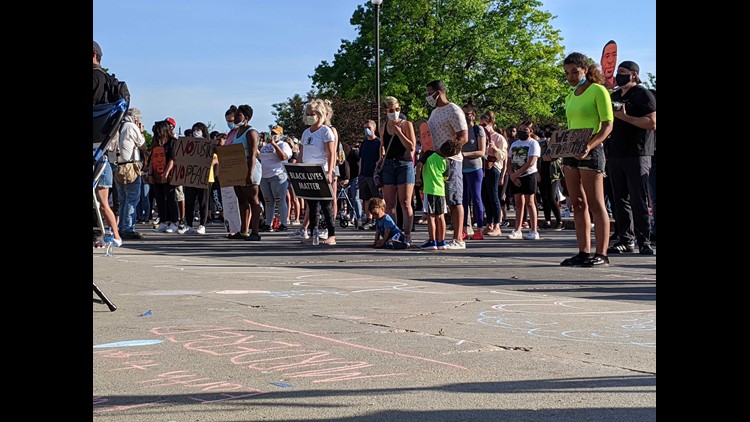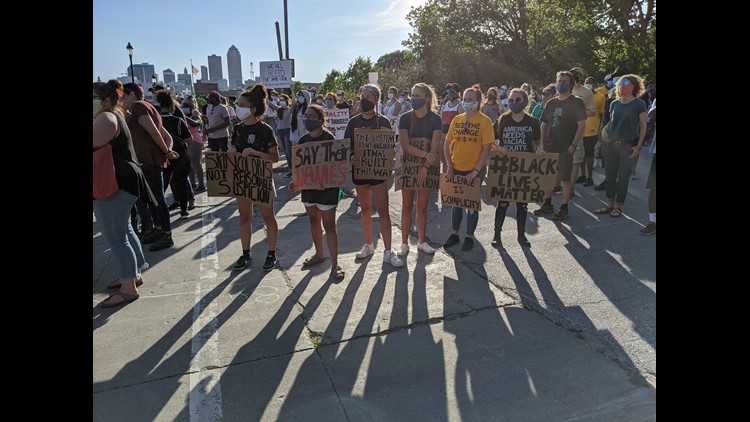DES MOINES, Iowa — Tuesday marks five days since the first George Floyd protests—both peaceful and violent—hit the streets of Des Moines.
Law enforcement has used a variety of tools such as tear gas to deescalate or deter protesters.
"At some events, agitators, again, attempted to detract from the message and resort to violence," Gov. Kim Reynolds said Tuesday at the Iowa State Capitol. "While law enforcement disarmed most situations, damage did occur and arrests were made. These types of actions do absolutely nothing to create solutions and move forward and they're not going to be tolerated."
Iowa Department of Public Safety Commissioner Stephan Bayens was asked what went into making a decision to use certain types of force during protests.
"It's not a science, it's an art, so to speak," Bayens said. "Those events are incredibly dynamic and chaotic. It's chaotic for those that are in attendance, but ... it's chaotic for the officers too, quite frankly."
"You know, we train and train and train in large part so we can somewhat divorce ourselves from the chaos and the emotion that naturally builds in all of us, and to try to remain those consummate professionals."
Bayens said when those decisions are made, it's not a "vacuum," meaning there's more that goes into making a specific decision.
He said officers are stationed in the crowd and social media is monitored to to see if there are any coordinated efforts being made.
"We have to evaluate all those things in conjunction with one another to evaluate the necessity and the risk of taking those actions and even then, we are extremely reluctant to take those actions," Bayens explained.
Monday night, law enforcement officers didn't enforce the 9 p.m. curfew in Polk County until about 11:30 p.m., according to Bayens. He included that they gave five dispersal orders that night before using other methods of dispersal.
The decision to break out the crowd wasn't spurred, however, by any single action by protesters.
"It's never a final straw, so to speak, it was the confluence of all of those things you described ... is to try to give as much grace to folks as you can and not impose a hard curfew, but evaluate those circumstances," Bayens said.
Time, Bayens reiterated, it's one of many factors.
"It's so multifaceted. There's not a straw that said, "Okay, that's it." It was really evaluating the subtotal."
Iowa Capitol George Floyd rally
WATCH: Local 5 coverage on Des Moines George Floyd protests











